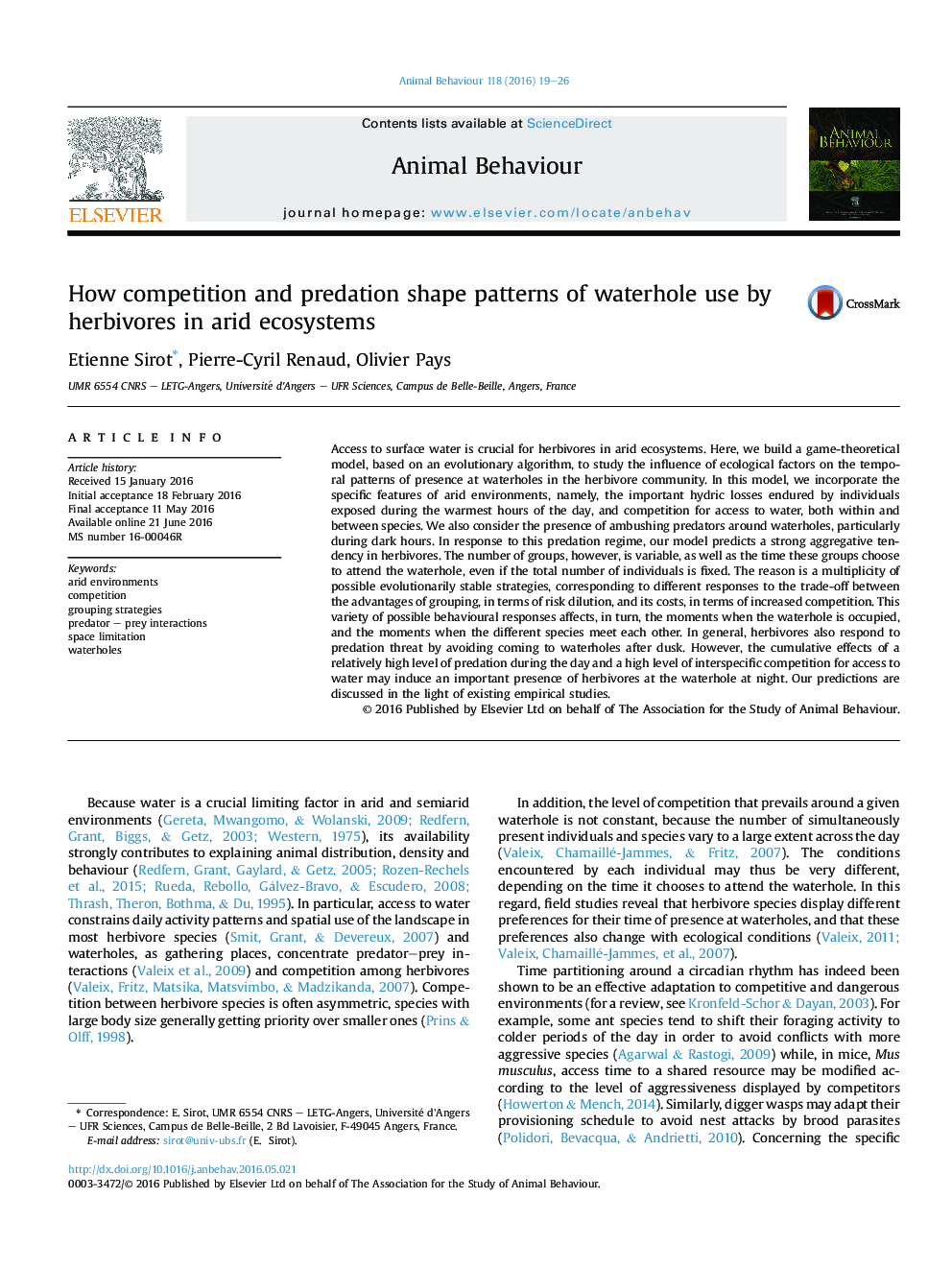| کد مقاله | کد نشریه | سال انتشار | مقاله انگلیسی | نسخه تمام متن |
|---|---|---|---|---|
| 2416233 | 1552210 | 2016 | 8 صفحه PDF | دانلود رایگان |
• Patterns of presence at waterholes in a herbivore community are derived theoretically.
• Predation threat induces strongly aggregative and diurnal behaviour in herbivores.
• This behavioural response may lead to important herbivore presence during warm hours.
• Competition may promote herbivore presence at night, when most predators are active.
Access to surface water is crucial for herbivores in arid ecosystems. Here, we build a game-theoretical model, based on an evolutionary algorithm, to study the influence of ecological factors on the temporal patterns of presence at waterholes in the herbivore community. In this model, we incorporate the specific features of arid environments, namely, the important hydric losses endured by individuals exposed during the warmest hours of the day, and competition for access to water, both within and between species. We also consider the presence of ambushing predators around waterholes, particularly during dark hours. In response to this predation regime, our model predicts a strong aggregative tendency in herbivores. The number of groups, however, is variable, as well as the time these groups choose to attend the waterhole, even if the total number of individuals is fixed. The reason is a multiplicity of possible evolutionarily stable strategies, corresponding to different responses to the trade-off between the advantages of grouping, in terms of risk dilution, and its costs, in terms of increased competition. This variety of possible behavioural responses affects, in turn, the moments when the waterhole is occupied, and the moments when the different species meet each other. In general, herbivores also respond to predation threat by avoiding coming to waterholes after dusk. However, the cumulative effects of a relatively high level of predation during the day and a high level of interspecific competition for access to water may induce an important presence of herbivores at the waterhole at night. Our predictions are discussed in the light of existing empirical studies.
Journal: Animal Behaviour - Volume 118, August 2016, Pages 19–26
